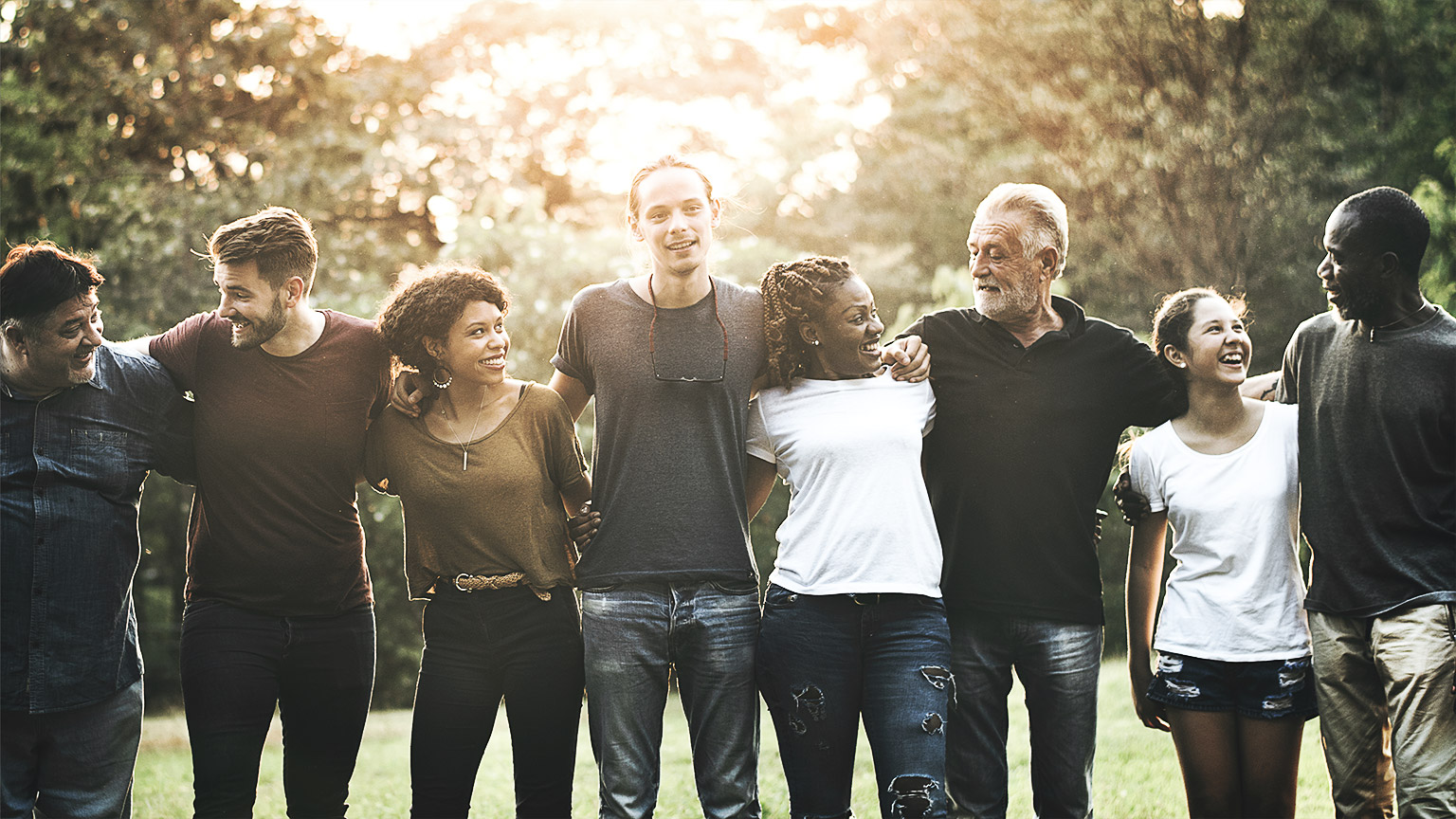Educators need to first recognise their own experiences, values and beliefs as a means to understand how these might impact their attitudes and actions towards the beliefs, values and experiences of others. Reflection is required to build professional strategies to work to develop cultural competence and ensure cultural sensitivity and safety. Educators must develop knowledge and understanding of diverse people when building relationships with children, families, colleagues and the community.
EDUCATORS WHO DEVELOP KNOWLEDGE AND EXPERIENCE IN DIVERSITY, THE KNOWLEDGE AND EXPERIENCES OF OTHERS, THEIR CULTURAL WAYS, KNOWINGS AND DOINGS SUPPORT CHILDREN AND FAMILIES IN A CULTURALLY COMPETENT MANNER. THE IMPORTANCE OF THE ROLE OF THE EDUCATOR MUST BE REGARDED AS AN OPPORTUNITY TO SUPPORT THE SELF-IDENTITIES AND CULTURAL AWARENESS OF ALL CHILDREN.
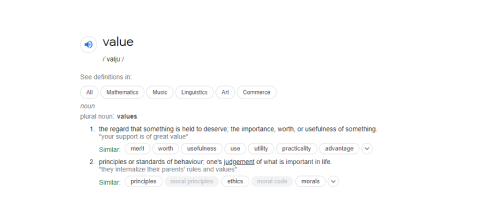
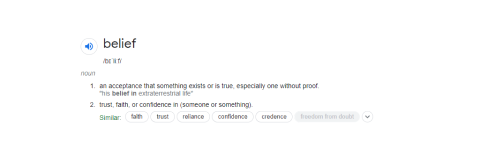
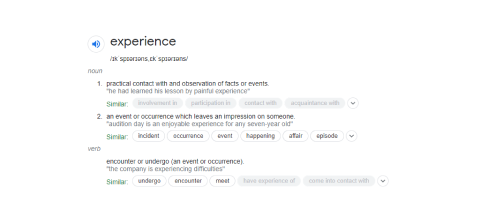

Educators are heavily invested in reflection as a means to consider the strengths and weaknesses of the practices, curriculum, interactions and impacts of their thoughts and actions within the workplace.
CRITICAL REFLECTION IS A MEANINGFUL AND ONGOING JOURNEY THAT WORKS TOWARDS CONTINUOUS QUALITY IMPROVEMENT FOR THE INDIVIDUAL, THE SERVICE AND ALL STAKEHOLDERS.
The EYLF explains critical reflection as ‘closely examining all aspects of events and experiences from different perspectives’ (ACECQA, 2018 pp.13; ACECQA, n.d. pp.12). When educators look within and consider what supports the children, the families and the service, they can also seek out what allows them to reframe and rethink what they do and, when required, seek support and advice. Critical reflection is also the second of three themes that a service must demonstrate in order to achieve a rating of “Exceeding NQS” for any standard. Aboriginal and Torres Strait Islanders peoples educators also use the term ‘deadly reflections’, to explain ‘yarding up about the day’ (SNAICC, pg. 3).
Check out the videos below from ACECQA explaining Critical Reflection.
As part of the National Quality Standards, Quality Area 1: Educational Program and Practice in standard 1.3: Assessment and Planning, this requires educators to engage in Critical Reflection based on the educational program and how the child is going at the service.

Element 1.3.2: Critical reflection: Critical reflection on the children’s learning and development, both as individuals and in groups, drives program planning and implementation.
For a quick refresher, let's have a look at the Circle of Change in the diagram below. This is the model that has been devised to demonstrate critical thinking and how it all comes together.
Process of self-reflection

You must take the time to evaluate your own beliefs and values to enable you to differentiate between those that represent respectfulness and those that do not. Here, you are focusing on yourself as an individual and realising what you represent when you interact with others.

It can be a challenging process to evaluate personal elements of our personality, and often it is embedded so deeply into the way we behave and interact with people that it can be a challenge to identify the areas that we may need to adapt or change. Everyone has strengths and weaknesses, and using the process of self-reflection will help you identify them.
Tips for self-reflection include:
- Being honest
- Noticing patterns in your behaviour
- Being forgiving of yourself
- Observing and recording personal growth.
Ensuring all children have opportunities to achieve learning outcomes
In education and care, it is vital to reflect upon your organisational practices and find equitable and effective ways to ensure every child could achieve specific learning outcomes. This is about providing children and their families with all the tools, support, and understanding they need to maximise their potential. It is about giving every child a fair chance of achieving success.
To reflect upon practices effectively, you should:
- Dedicate a specific amount of time to thinking about this issue
- Discuss practices with managers, colleagues, and other key stakeholders
- Consider your own education and experiences and not just what your organisation does already
- Think about what works well and why
- Think about what does not work well and why
- Conduct your own research; reading online articles, newspapers, magazines, etc.
As you work, record your observations, thoughts, and ideas.
Ensuring children can achieve learning outcomes means:
- Helping all children to access and participate in all activities
- Supporting children with specific needs
- such as mental or physical disabilities and behavioural and emotional problems
- Alerting staff to children’s needs
- Working in coordination with other key stakeholders
- such as parents, guardians, social workers, etc.
- Encouraging children to raise issues and problems they are facing, whether they are personal, familial, or financial
- Reviewing policies and practices regularly.
Crucially, you should always remain vigilant and look for signs that a child might be struggling to achieve their best (e.g., absence from education or services, lack of interest, self-isolation, etc.).
Responsive programming:
- Program philosophies reflect the principles of inclusion and an inclusive culture, the valuing of diversity, collaboration, and partnership.
- Intentional teaching is interactive, purposeful, and thoughtful and recognises the individuality of each child.
- Program design and delivery builds on community and cultural strengths.
- Services identify the resources available to support inclusion and ensure that they are accessed.
- Services apply principles of universal design for learning. This means creating curricula that support diverse ways of acquiring and demonstrating knowledge, and of engaging with each child.
Active participation:
- Services develop practices and can demonstrate to children and families that:
- All children participate meaningfully while learning, playing, and interacting together.
- All children are supported to be active members of their community.
- Programs acknowledge each child’s strengths and interests.
Professional development:
- Time and resources are provided for staff to engage in critical reflection about inclusive beliefs and practices.
- Services provide the opportunities for their educators and inclusion support professionals to develop skills and knowledge to ensure that they can support each child’s learning.
- Services ensure that their educators learn about available supports for facilitating inclusion, and work with them to create capacity-building strategies for implementing inclusive practices.
Managers lead by providing professional mentoring and the articulation of shared standards for the practice of inclusion.
Critical Reflection in practice

Let us take a moment to reflect on what we have learnt. Throughout this module you have been introduced to a lot of information about culture and different perspectives relating to early education. Like Quality Area 1 let us reflect and engage in some Critical Reflection.
Activity
Before you watch the next series of videos on a piece of paper write down this question:
What are your thoughts about inclusion, equity and diversity in early childhood setting?
Take into consideration
- Your personal beliefs
- Your personal experiences
- What you observed during SWLA 1
Next, watch this series of clips from youtube. These videos are looking at the themes we just explored around Inclusion, Equity and Diversity.
We will be approaching the same question we just reflected on at the end of the videos.
How are you feeling after that?
How did those videos make you feel?
Let me ask you that question again,
What are your thoughts about inclusion, equity and diversity in early childhood setting?
Write down on the piece of paper your thoughts and views post watching those videos. How has this changed your thoughts, views and perspectives?
Reflect on how it makes you feel and how this is going to help change your practices when working with children.
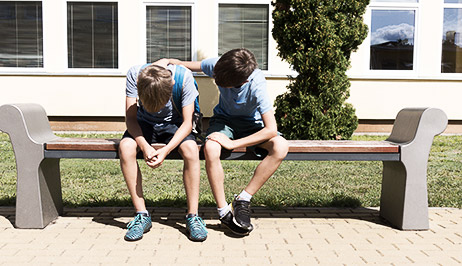
Watching the clips and completing the activity before may have been the beginning of a better understanding of what it is like to be in the others’ shoes or you may already have experience working with diversity or have experienced it yourself as a marginalised individual or group. Awareness supports a better understanding of the feelings of others and can bring about a change in attitude and perspective. It is important to come to these realisations through such experiences and knowledge instead of following a crowd and their thoughts, even if these people are close to you.

Asking yourself many reflective questions often, as an ongoing process, encourages educators to consider what they do and why they do it but also how and when. This considers the potential impact this has on their profession and role, and ultimately on others. Anyone working with people should be reflecting on their beliefs, actions, perspectives and how this comes out through internal and external behaviours.
Reflective questions you may ask yourself could include:
- What do I understand about the children and their family?
- What do I need to know more about?
- How will this benefit everyone?
- Where can I find out more?
- How can I gain more experience?
- Why does my impact on the child, family and community matter?
- How am I a part of society’s identification and what can I do to support diversity and inclusion?
Watch some videos below explaining the concept of empathy and the importance of empathy.

Depending on the child, the family and their needs, there may be different avenues an educator can access to get a better understanding.
Here are some ideas:
- The family
- The child
- Colleagues and the education and care services documentation like child enrolment form
- The child’s previous educators or external services (agencies, intervention services, etc)
- Indigenous elders or community members within your local area
- Advocacy organisations and government departments, such as:
- Department of Education websites
- Early Childhood Australia websites
- SNAICC- The National voice for Aboriginal and Torres Strait Islander children
- The Narragunnawalli- to access more professional development opportunities
- Victorian advocacy and professional development for LGBTI e.g. Gender diversity, sexual orientation and identification supports
- Working with Specific People Groups
- Research: An Indigenous principle in research includes the necessity to include those who ‘know’ and have ‘lived’ the experience of the Indigenous people within the research team. Award-winning researcher and lecturer Brian Martin informs further that the principles are based on self-determination and ‘knowing’. Those within the community know their stories and history and also know how to obtain and share information about their community, but can interpret it with accuracy, assuring the integrity of its use.
- Documentaries: There is a collection of true stories of Indigenous people on ABC that can be accessed.
Research can be, at times, quite complex and overwhelming for people. A good resource you can use to help you find good quality research regarding early childhood education and care check out Child Care and Early Education Research Connections.
There are various government bodies that can assist you. Depending on your state and territory, there would be a local regulatory authority. See the diagram below to review the local regulatory bodies for your state & territory. As well as speaking to ACECQA.
In service documentation that can provide you with some information to assist you can be:
- Child's enrolment records
- Additional forms and information found in the enrolment records like diagnoses, referral letters etc
- 'All about me' forms
- Family surveys
- Parents personal philosophy
- Feedback forms, and so much more. Every service is unique in how they obtain and store data and information.
When seeking permission to share information about Aboriginal and Torres Strait Islander people, it's essential to consider several important factors:
-
Cultural sensitivity: Understand and respect the cultural significance of the information. Some knowledge may be sacred or considered private and should not be shared without permission. For example, certain stories or practices may be restricted to specific groups, such as men’s or women’s business
-
Consultation and consent: Always seek informed consent from the relevant community members or Elders before sharing information. This may involve explaining how the information will be used and ensuring that they agree to its dissemination.
-
Respect for intellectual property: Aboriginal and Torres Strait Islander peoples’ cultural expressions, including art, stories, and traditional knowledge, are often viewed as collective intellectual property. Misuse of this information can lead to cultural appropriation and harm.
-
Accurate representation: Ensure that the information shared accurately reflects the views and experiences of the community. Misrepresentation can perpetuate stereotypes or misinformation.
-
Privacy and identity: Be mindful of privacy concerns, especially regarding personal stories or images. This includes understanding the implications of sharing names, photographs, or other identifying details about individuals or communities.
-
Long-term relationships: Foster and maintain respectful and ongoing relationships with the communities involved. Building trust is crucial for effective communication and collaboration.
By taking these considerations into account, you can approach the sharing of Aboriginal and Torres Strait Islander information with respect and integrity.
You may find the following resources useful to learn more about Aboriginal and Torres Strait Islander Protocols:
- Aboriginal and Torres Strait Islander protocols (published by Victoria State Government)
- Respectful Use of Indigenous Knowledge (published by IP Australia)
- Aboriginal and Torres Strait Islander protocols (published by Oxfam Australia)

There are hundreds of distinct Aboriginal and Torres Strait Islander Peoples communities, cultural and language groups, clans, families and kinship networks in Australia. Therefore, it is important not to assume all groups have the same customs, language or systems.
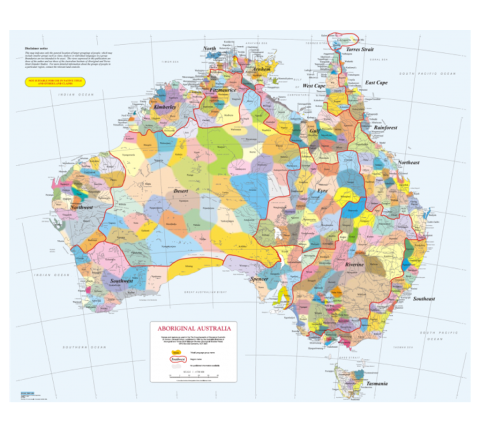
Understanding social justice fosters awareness and respect for the diverse cultural backgrounds and experiences of Aboriginal and Torres Strait Islander peoples. Education about their histories, cultures, and ongoing challenges can enhance empathy and respect among non-Indigenous Australians. This awareness is crucial in addressing stereotypes and misconceptions and promoting a more inclusive society.
A good resource for you to access to identify the local clan in your area. Check out Aiatsis for more information, including resources, education and much more.
Social justice for Aboriginal and Torres Strait Islander people focuses on several key areas aimed at addressing historical injustices and promoting equity and recognition.
These areas include:
-
Recognition of rights and culture: Social justice emphasises the importance of recognising Aboriginal and Torres Strait Islander peoples' rights to their land, culture, and identity. This includes supporting self-determination and respecting their cultural practices and languages.
-
Equity in access to services: Ensuring equitable access to health care, education, housing, and employment opportunities is a significant focus. Aboriginal and Torres Strait Islander communities often experience disparities in these areas compared to non-Indigenous Australians.
-
Land rights and environmental justice: Land rights are crucial for Aboriginal and Torres Strait Islander peoples, as their connection to land is foundational to their culture and identity. Social justice movements often advocate for the return of land and the protection of sacred sites.
-
Addressing systemic discrimination: Social justice initiatives aim to confront and dismantle systemic racism and discrimination faced by Aboriginal and Torres Strait Islander peoples. This includes advocating for reforms in law enforcement, justice, and social services to ensure fair treatment.
-
Health and wellbeing: Improving the overall health and wellbeing of Aboriginal and Torres Strait Islander peoples is a critical aspect of social justice. This involves addressing the social determinants of health, promoting mental health support, and ensuring culturally safe health services.
-
Community empowerment: Social justice efforts often prioritize empowering Aboriginal and Torres Strait Islander communities to take control of their futures, supporting initiatives that allow them to lead their development and decision-making processes.
For further reading and a deeper understanding, you can visit the Australian Human Rights Commission's website.
Watch below some videos to explain and give you a better understanding of Aboriginal and Torres Strait Islander culture and way of life.
Risk Factors and Protective Factors
To understand health and well-being, it's important to consider both risk factors and protective factors. Risk factors are things that increase the likelihood of health problems, such as historical trauma or displacement. Protective factors are positive aspects that help people stay healthy and resilient, like strong cultural ties, a connection to traditional lands, and supportive families. For First Nations communities, recognising these factors is crucial for finding ways to improve their health and well-being.
Colonisation has had a devastating impact on First Nations communities. It led to immediate loss of life through violence and disease, disrupted traditional ways of living by taking over lands and confining people to reserves, and resulted in the forced removal of children from their families. These actions have caused long-lasting trauma and ongoing health disadvantages. (Australian Institute of Health and Welfare, 2024).
Social and emotional well-being is a crucial part of the overall health of Aboriginal and Torres Strait Islander peoples. It is a broad concept that includes relationships with family, community, and connections to land, spirituality, and ancestry.
Take a look at the table below of identified risk factors and protective factors of Aboriginal and Torres Strait Islander Peoples social and emotional well-being:
| Domain | Risk factors | Protective factors |
|---|---|---|
| Physical well-being | Poor physical health, chronic illness, disability. | Good physical health, and access to healthcare. |
| Mental well-being | Psychological distress, trauma, substance abuse, economic hardships. | Emotional resilience, positive mental health practices. |
| Family/Kinship | Family conflict, domestic and family violence, and loss of family members. | Strong family bonds, and a supportive family environment. |
| Community | Social isolation, lack of community support, discrimination, homelessness (lack of stable housing). | Community support, social networks, a sense of belonging, and stable housing. |
| Culture | Loss of cultural identity, cultural disconnection. | Strong cultural identity, cultural practices and traditions. |
| Land/Spirituality | Displacement from land, lack of spiritual practices. | Connection to land, spiritual practices, and cultural heritage. |
Read
You can also access the below resource with detailed information on contributing to risk factors and protective factors.
Many services and educators have reflected upon practices and realised they may have been misinformed about elements regarding the aboriginal peoples community, especially regarding their interactions and programming. These communities and many more are working to support the education and understanding between cultures by providing information about protocols that need to be used with their culture.
These can include:
- The welcome to country
- Acknowledgement of country
- Smoking ceremonies
- Positivity toward the culture
- Communication styles and strategies, including use of silence, body language, jargon, touch and eye contact
- Supporting cultural connectedness and identities
- Preferred terms and titles
- Use of cultural customs by non-indigenous peoples
- Use of time and place
- The need for further consulting elders
- Men and women’s business
- Numeracy, literacy and triangulations
- Using information with sensitivity and awareness of appropriate interpretation
You can find a good resource here which provides guidance on communicating face to face, communicating in print, online, television and radio.
A good research paper that was developed by Annabel Jones and Byrong Barnett called ‘Guidelines for ethical and effective communication for researchers working in Torres Strait’. The research paper goes through Torres Strait Island culture and history, protocols and guidelines, communication toolbox, traditional knowledge and much more.
As well the Queensland Government has made a document resource about how to effectively communicate with Aboriginal and Torres Strait Islander people.
KU Children Services and Gowrie have created a resource for Education and Care services called ‘Engaging with Aboriginal Communities’. The resources provides some ideas and questions that they have found most services and educators ask.
As well Oxfam Australia has released a resource for educators to use called the Aboriginal and Torres Strait Islander Cultural Protocols. The document was designed to help staff to ensure their work respects Aboriginal and Torres Strait Islander cultural beliefs and practices. Check out the resource here.

Aboriginal and Torres Strait Islander children are twice as likely to be developmentally vulnerable by school age than other Australians. High-quality early education has the potential to improve these outcomes with evidence of vulnerability dropping by 6% from 2009 to 2018 (AIHW, 2020).
- Australia
- Indigenous
- Non-indigenous
- English only
- Language backgprund other than ENglish
- Major cities
- Inner regional
- Outer regional
- Remote
- Very remote
- Lowest socioeconomic areas
- Highest economic areas
Case Study

Thelma is a 4-year-old Aboriginal child who has just enrolled with her family to the service. She has never attended a service before but has been told that it will help her when she goes to school. Her parents want Thelma to enjoy school and love learning, though they are unsure how she will take to such a structured environment, as they spend more of their times outdoors and in nature.
Thinking about Thelma, what are her and her family needs?
What do you need as an educator to better understand about her and her family, and culture to support her?
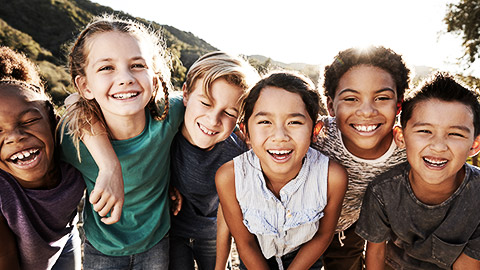
The experience of every child lies at the centre of inclusive practice. Their experiences will be influenced by their identity; the culture and practices of their family; the community they live in; and the social, economic, and cultural setting of their society. Their experience will also be formed by the early childhood education and care professionals they meet, and the service providers whose settings they use. These in turn are affected by the educational and research institutions that develop the workforce and inform and disseminate professional practice. Government policies, regulations and guidelines influence the nature and accessibility of services.
What does Holistic approach mean?
At a glance. A holistic approach means to provide support that looks at the whole person, not just their mental health needs. The support should also consider their physical, emotional, social and spiritual wellbeing.
What does Childhood development mean?
Child development refers to the sequence of physical, language, thought and emotional changes that occur in a child from birth to the beginning of adulthood. During this process a child progresses from dependency on their parents/guardians to increasing independence.
What is holistic childhood development in relation to Aboriginal and Torres Strait Islander people?
The indigenous population have a holistic view of children’s development, and ultimately, as a connection to their wellbeing, acknowledging the economic and social conditions that impact this. As discussed earlier, there a many cultures and histories within the Australia Aboriginal Peoples network, each with varying and individual needs.
The Australian Government has published some statistical data looking at statistical data about Aboriginal and Torres Strait islander children against various topics like health, education, social support, housing and justice and safety.
What are the 5 main areas of child development?
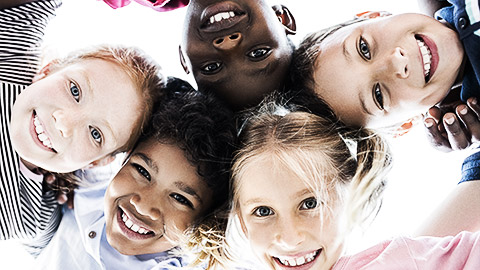
What is a strengths based program for childhood development?
A strength-based approach to early childhood education is a collaborative and solutions-focused way of working. It encourages educators to consistently draw on their knowledge of a child's skills, capabilities, and dispositions to learning.
Ensuring curriculum decisions promote inclusion and participation of all children
In the education and care service sectors, one of the most fundamental principles is to include and encourage the participation of all children in all activities. According to Unicef, the world’s foremost charity for children, ‘participation’ can be defined as ‘children and adolescents partaking in and influencing processes, decisions, and activities.
By including all children in all activities, you will:
- Build the children’s confidence and self-esteem
- Cultivate group friendships
- Foster a positive and enjoyable environment
- Help to maximise the children’s potential
- Unlock the children’s talents
- Broaden the children’s horizons
- Nurture new interests
- Encourage children to return to the group.
These are just some of the countless benefits young people experience when they are included and participate in group activities.
Holistic approaches
What does holistic approach mean?
A holistic approach is to provide support that looks at the whole person, not just their mental health means. The support also includes their physical, emotional, social and spiritual wellbeing.
Holistic approaches based on the diverse backgrounds of the children help to support an inclusive approach based on their strengths, interests and connections with their background and culture. Having thorough conversations with the child’s family, community and indigenous children’s education advocates can support the implementation of such programs.
Obtaining information from the family regarding their perspectives on goals and strategies for their children’s learning and development will ensure a synchronised model needed to ensure a cultural competency of the service and alignment of service, child, family and community. This encourages a positive identity of the child throughout. The first goal should be to deliver a service and program that is a safe space for children and their families, including physical safety, emotional safety and cultural safety.
Check out some videos explaining holistic approaches and holistic development.
RECONCILIATION IS ABOUT STRENGTHENING RELATIONSHIPS BETWEEN ABORIGINAL AND TORRES STRAIT ISLANDER PEOPLES AND NON-INDIGENOUS PEOPLES, FOR THE BENEFIT OF ALL AUSTRALIANS.
Every service needs to have or begin to develop a reconciliation plan (RAP) – this is a formal statement of commitment to reconciliation. This can be done by establishing a working group dedicated to the implementation and development of the RAP, developing a reflection survey, a vision for reconciliation at your service and then choose RAP actions from the delegated options. This will then be forwarded for approval to Reconciliation Australia. Services and/or educators must sign up to the Narragunnawali platform to register and also utilise their services and resources. This is a working document with ongoing reflection and review processes.
What is Reconciliation?
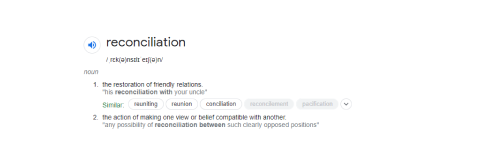
For Aboriginal and Torres Strait Islander peoples, Australia’s colonial history is characterised by devastating land dispossession, violence, and racism. Over the last half-century, however, many significant steps towards reconciliation have been taken.
Reconciliation is an ongoing journey that reminds us that while generations of Australians have fought hard for meaningful change, future gains are likely to take just as much, if not more, effort.
In a just, equitable and reconciled Australia, Aboriginal and Torres Strait Islander children will have the same life chances and choices as non-Indigenous children, and the length and quality of a person’s life will not be determined by their racial background.
Dimensions of Reconciliation
Race Relations
All Australians understand and value Aboriginal and Torres Strait Islander and non-Indigenous cultures, rights and experiences, which results in stronger relationships based on trust and respect and that are free of racism.
Goal: Positive two-way relationships built on trust and respect exist between Aboriginal and Torres Strait Islander and non-Indigenous Australians throughout society.
Action: Overcome racism
Aboriginal and Torres Strait Islander peoples participate equally in a range of life opportunities and the unique rights of Aboriginal and Torres Strait Islander peoples are recognised and upheld.
Goal: Aboriginal and Torres Strait Islander Australians participate equally and equitably in all areas of life – i.e. we have closed the gaps in life outcomes – and the distinctive individual and collective rights and cultures of Aboriginal and Torres Strait Islander peoples are universally recognised and respected. Aboriginal and Torres Strait Islander people are self-determining.
Action: Renew focus on Closing the Gap
The active support of reconciliation by the nation’s political, business and community structures.
Goal: Our political, business and community institutions actively support all dimensions of reconciliation.
Action: Capitalise on the RAP Program to create a wider range of opportunities for Aboriginal and Torres Strait Islander Australians.
An Australian society that values and recognises Aboriginal and Torres Strait Islander cultures and heritage as a proud part of a shared national identity.
Goal: Aboriginal and Torres Strait Islander histories, cultures and rights are a valued and recognised part of a shared national identity and, as a result, there is national unity.
Action: Achieve a process to recognise Australia’s First Peoples in our Constitution.
All Australians understand and accept the wrongs of the past and their impact on Aboriginal and Torres Strait Islander peoples. Australia makes amends for past policies and practices ensures these wrongs are never repeated.
Goal: There is widespread acceptance of our nation’s history and agreement that the wrongs of the past will never be repeated— there is truth, justice, healing and historical acceptance.
Action: Acknowledge our past through education and understanding.
Check out the ACECQA blog ‘We hear you’, on the blog there is a great article about ‘Developing Narragunnawali Reconciliation Action Plans and Exceeding the National Quality Standard’.
As well most government departments have support for diversity on their websites. Have a look at this article called ‘Supporting students from refugee backgrounds’.
Reconciliation Action Plan
The Narragunnawali RAP framework outlines a sustainable, holistic approach to driving reconciliation in education by building relationships, respect and opportunities:
- in the classroom (in teaching, learning and curricula)
- around the school (in the ethos and activities within the wider school or service environment)
- with the community (in the partnerships that extend beyond the school or service gates).
The RAP framework comprises 40 Actions, 14 of which are required to maintain consistency and quality across all RAPs. Your unique context will guide how your school or service meaningfully implements the Actions committed to in your RAP.
There are 40 RAP Actions in total, 14 of which are required to maintain consistency and quality across all RAPs. RAP Actions are important for strengthening relationships, respect and opportunities in the classroom, around the school or service, and with the community. They also present quality learning opportunities tied to professional standards and curriculum frameworks.
For more information and to sign up to create a RAP check out the Narragunnawali website for more information.
Reconciliation is the act of restoring relationships as a journey, whilst ensuring that both sides understand the perspectives of others during this restoration process.
For Aboriginal and Torres Strait Islander People, it is imperative that their history, experiences, customs and beliefs are embraced whilst recognising the dispossession, persecution and oppression that occurred through colonisation and the impact of this on their lives and the lives of later generations, re-establishing their self-determination and self-efficacy.
In early and middle childhood services, this is a large part of the learning frameworks, in developing cultural competencies and building on the identities of the children, their families and their culture.
The RAP
Follow the steps to get acclimated with the RAP.
Steps:
- Navigate the Narragunnawalli site and find the early learning audit checklist on curriculum. This is the best place to start to see if key improvements need to be made or if you are on the right track. Complete this within the service or from memory as a practice. https://scnv.io/927l
- From this audit, select some key actions you could see as particularly necessary in the service from the headers of a) relationships b) respect c) opportunities. Note where the approved frameworks or guidelines are also discussed.
- Access ‘Who is involved in the RAP’ and explain the key stakeholders.
- Note down the number of actions the service needs to put forward for approval.
- Remember some of the key ideas you assigned as action points and thought would work well in a service (or with the age group you may be working with for the next topic).
- Think about how and when would you consult with others regarding your ideas, implementation and critical reflections for review.
- Choose one idea you thought suitable and think about implementing it. What questions would ask stakeholders regarding the implementation and reflection of the experience?
- Read about demonstrating respect for Aboriginal and Torres Strait Islander Peoples cultures within the school environment through here: https://scnv.io/2yL9
- Write FIVE or more key points of information you took from the ‘need to know’ tab regarding critically reflective questioning and tokenism.
- In the area above Q8, look through the ‘ideas.’ Are you already implementing any of these ideas? Name ONE of the ideas presented on the site that you would like to implement. What strategies would you use to support a genuine implementation?
For Aboriginal people living today, their experience of living in Australian society with this historical legacy has many significant impacts on their lives. Three impacts with implications for service delivery are:
- The emotional impact on Aboriginal people of their experiences and their families experiences
- The barriers to gaining living skills (for example being separated from their family)
- The lack of trust of institutions
